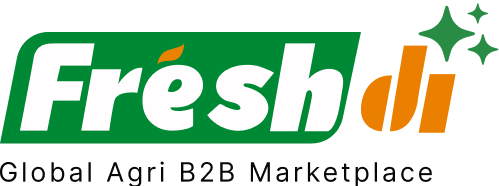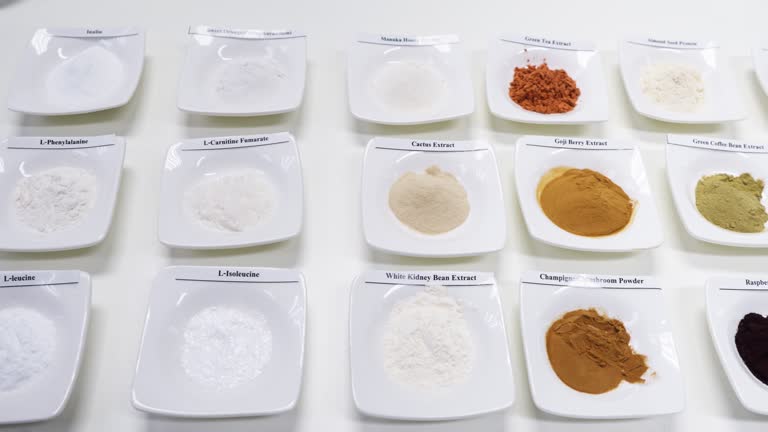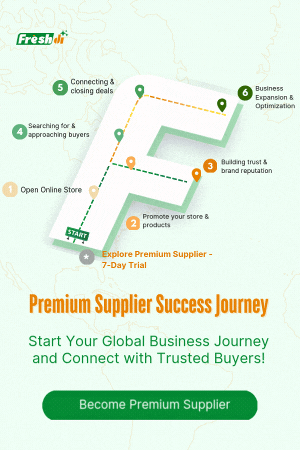Introduction – Current State of Play: The Food Additives Sector in United States
The food additives market in the United States is undergoing a seismic shift in 2025. From sweeping regulatory reforms to massive supply chain investments and changing consumer demands, the industry landscape is anything but static. In recent months, the FDA has cracked down on artificial ingredients, global trade tensions have led to tariff hikes, and major retailers like Walmart are pushing for cleaner, more transparent ingredient lists.
For businesses sourcing food additives, staying ahead of these changes isn’t just helpful—it’s absolutely essential. The rules of the game are changing fast, and only those who adapt will thrive. Whether you’re a food manufacturer, private label brand, or ingredient distributor, the need for verified, agile, and compliant suppliers has never been greater. Let’s unpack the most urgent developments—then we’ll dive into the top 7 vetted suppliers you should consider working with this quarter.
Deep Dive – Market Movers: Recent Developments and Consequences
The Clean Label Revolution
Consumers today don’t just want food—they want food they can trust. This has supercharged the clean label movement. Products with simplified, recognizable ingredients are flying off shelves, with sales jumping 78%. Additives that once extended shelf life or enhanced color are now under scrutiny, and the demand for natural alternatives is pushing R&D to innovate faster than ever.
Natural and Functional Ingredients Are King
Functional foods—those with added health benefits—are driving the next wave of food innovation. From plant-based protein to natural antioxidants, consumers want more from their food. This has led to a boom in demand for natural additives like probiotics, plant extracts, and bioactive compounds.
Sustainability Is No Longer Optional
Manufacturers are overhauling operations to meet sustainability goals. A 42% reduction in energy use and a 38% cut in carbon emissions have been achieved through better waste management and greener production methods. For buyers, this means suppliers with measurable sustainability practices are becoming more attractive (and, in many cases, required).
Cold Storage Investments Are Transforming Logistics
In 2024 alone, 22 projects were launched to build or expand cold storage facilities in the U.S.—73% of which were tied to food and beverage logistics. This bolsters the supply chain’s ability to handle sensitive food additives that require controlled temperatures, reducing spoilage and ensuring quality.
Walmart’s Game-Changing Reformulation
In a landmark move, Walmart announced it will eliminate synthetic dyes and 30+ artificial additives from its private-label products by 2027. That’s nearly 1,000 products—everything from cookies to beverages—getting a clean makeover. This puts pressure on ingredient suppliers to be cleaner, faster, and more transparent.
Read more here
Massive Capital Inflows into Food Manufacturing
Between 2023 and 2024, U.S. food manufacturing attracted 154 new projects totaling $15.3 billion, creating 23,000 jobs. The dairy sector alone pulled in $3.3 billion. This surge is boosting demand for emulsifiers, stabilizers, and other dairy-compatible additives.
Tariffs and Regulatory Pressure
Tariffs on imported additives have risen to 15% in early 2025, increasing costs and prompting companies to find local or tariff-free alternatives. Meanwhile, the FDA has banned Red Dye No. 3 and Brominated Vegetable Oil, forcing widespread reformulation.
Market Outlook
The U.S. food additives market is on track to hit $36.96 billion by 2030, growing at a CAGR of 5.9%. Natural, sustainable, and functional additives are the big winners here.
Top 7 Verified Food Additives Suppliers in United States – Navigating Current Market Realities
Choosing the right supplier is now a high-stakes decision. The following suppliers have been verified by Freshdi for reliability, certifications, and positive buyer reviews—making them highly relevant in today’s volatile market.
-
Triton Trading, Inc.
Based in New Jersey, Triton is known for its robust portfolio of flavor enhancers and emulsifiers. Their cold-chain logistics expertise positions them well in a market demanding freshness and traceability. -
Yaquesita LLC
Specializing in natural colorants and preservatives, Yaquesita is a go-to for clean label formulators. Their recent expansion into organic-certified additives adds more value to health-conscious brands. -
ASR
A leader in sweeteners, ASR offers a wide range of natural and synthetic sugar substitutes. Their compliance with new FDA mandates makes them a prime partner for reformulating products post-regulation. -
International Commodities Investment Group Inc
Known for sourcing rare functional ingredients globally, they’re a smart choice for brands focusing on wellness and nutrition trends. -
Stover And Company
If you’re in the confectionery or bakery space, Stover offers a vast range of specialty additives, including stabilizers and leavening agents, suitable for high-demand reformulations. -
Roh Global LLC
With a strong focus on sustainability and traceability, Roh Global is aligned with manufacturers aiming to meet ESG targets while sourcing high-quality ingredients. -
Food Innovations
This Florida-based supplier offers cutting-edge solutions in flavor systems and food fortification, ideal for functional food and beverage brands.
Dynamic Ranking Note
Platforms like Freshdi regularly update supplier performance rankings based on RFQ trends, buyer feedback, and supply chain activity. Be sure to check for the latest “Suppliers of the Month/Quarter” to stay on top of top-performing partners.
Market Navigation – Strategic Responses to the Current Food Additives Landscape in United States
So, what should businesses be doing in response to all this change?
1. Reevaluate Sourcing Strategies
With tariffs rising and ingredient bans looming, many companies are shifting to domestic suppliers or those with tariff-free trade relationships. Verified U.S.-based suppliers with compliant portfolios are gaining traction.
2. Focus on Regulatory Compliance
Reformulation is no longer optional—it’s survival. Whether you’re replacing Red No. 3 or steering clear of brominated ingredients, you’ll need partners who are ahead of the regulatory curve.
3. Prioritize Sustainability and Transparency
Buyers are increasingly choosing suppliers based on environmental metrics. Ensure your partners have clear sustainability goals, traceability systems, and certifications.
4. Hedge Against Supply Chain Disruption
Invest in relationships with suppliers who have robust cold-chain logistics and diversified sourcing networks. This helps reduce risks from climate events or geopolitical turmoil.
5. Tap into the Functional Food Boom
Functional additives—think fiber enhancers, immune boosters, and mood regulators—are hot. If your product line isn’t leveraging these, now’s the time to pivot.
Conclusion – Key Takeaways for Businesses in a Rapidly Evolving Market
Let’s face it: the U.S. food additives scene in Q3 2025 is not for the faint of heart. But it’s also full of opportunity for businesses ready to adapt.
Here are the top takeaways:
- Regulatory changes are forcing reformulation, especially around artificial additives.
- Clean label and functional ingredients are now market expectations, not luxuries.
- Tariffs are pushing companies to look locally or towards compliant international partners.
- Sustainability and cold-chain investments are reshaping supplier selection criteria.
- Verified, agile suppliers are the real MVPs in today’s landscape.
Checklist for Buyers in Q3 2025
✅ Audit your current additives for banned or high-risk ingredients
✅ Prioritize suppliers verified by platforms like Freshdi
✅ Shift toward natural, functional, and clean label-compatible additives
✅ Look for partners with strong sustainability and cold-chain credentials
✅ Monitor RFQ trends and price shifts in real-time using Freshdi insights
The Freshdi Edge
Platforms like Freshdi empower buyers with:
- Real-time market intelligence
- Verified supplier directories
- Alerts on ingredient bans and regulatory changes
- Dynamic rankings of best-performing suppliers
- RFQ trends that respond to global events
In an industry evolving by the day, Freshdi makes it easier to move fast—and move smart.
References
- Clean Label Trends – Intel Market Research
- Functional Ingredients – Intel Market Research
- Cold Storage Trends – EDO Marketplace
- Walmart Clean Label Initiative – AP News
- Food Manufacturing Investment – PR Newswire
- Tariff Impact – 360iResearch
- Market Forecast – Grand View Research
FAQs
1. Why are food additives under increased scrutiny in the United States?
Due to rising health concerns and consumer demand for transparency, the FDA has banned several synthetic additives, prompting major reformulations.
2. What’s driving the demand for clean label additives?
Consumers want simple, natural, and recognizable ingredients. This trend is especially strong among younger demographics like Gen Z and millennials.
3. How can I find verified suppliers that meet new regulations?
Platforms like Freshdi offer verified supplier listings, performance rankings, and compliance updates tailored to regulatory shifts.
4. Are there cost-effective alternatives to now-banned additives?
Yes, many suppliers are innovating with plant-based and naturally derived alternatives that offer similar functionality at competitive prices.
5. What are the biggest risks in sourcing food additives in 2025?
Regulatory changes, rising tariffs, and supply chain disruptions—especially in cold storage—are top risks. Having agile, informed suppliers is key to managing them.


